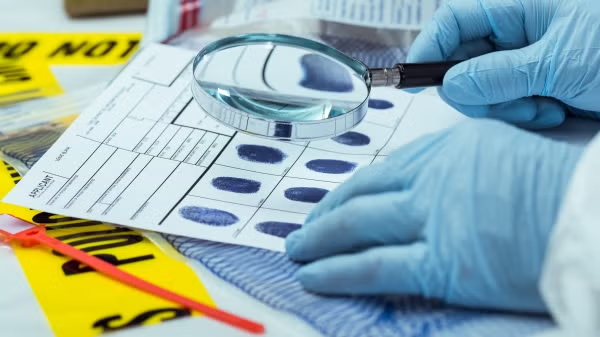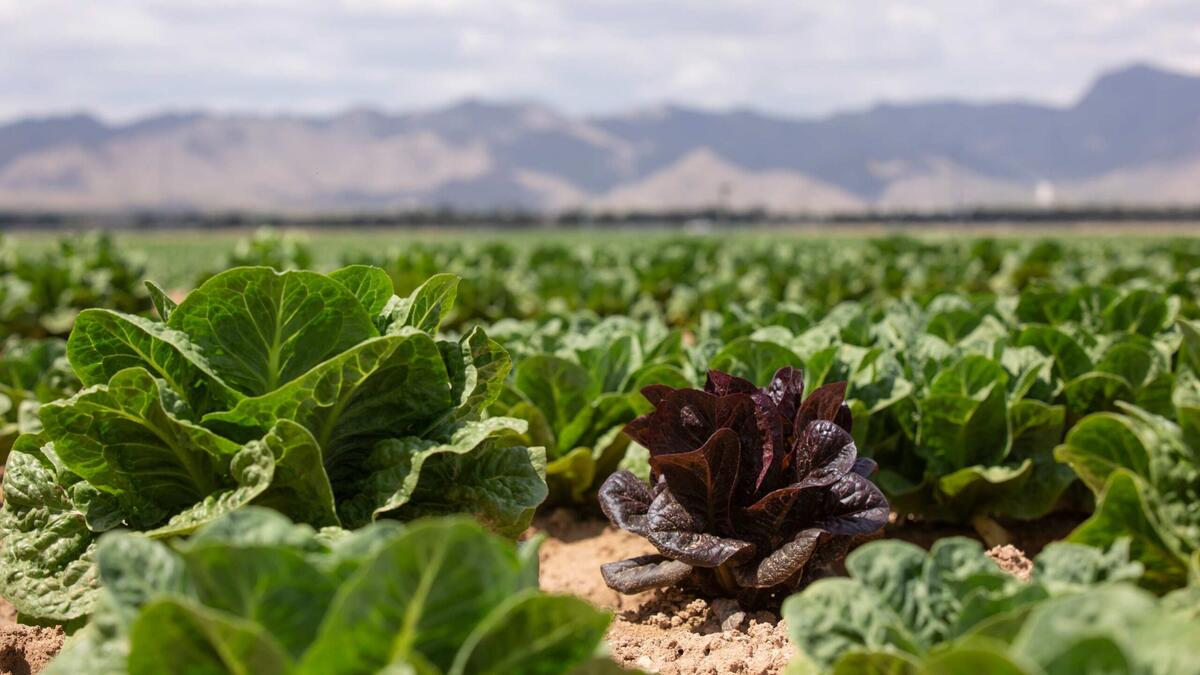Food production depends on phosphorus. It’s an essential nutrient for crops of every kind. And as commercial agriculture has expanded during the past 70 years to feed a growing global population, so has the mining of phosphate rock to produce fertilizers.
Unfortunately, the application of these fertilizers is very inefficient. Only 20% of the phosphorus poured onto fields is taken up by plant roots and moved through the food chain. The rest gets chemically locked in the soil or spilled into the canals, rivers, lakes and estuaries where farm irrigation ultimately flows. This buildup in water systems gradually causes eutrophication or the growth of harmful algae blooms that kill fish and other marine life.
“It’s a wickedIn planning and policy, a wicked problem is a problem that is difficult or impossible to solve because of incomplete, contradictory and changing requirements that are often difficult to recognize. Source: Wikipedia. problem,” said Paul Westerhoff, a Regents Professor of civil, environmental and sustainable engineering in the Ira A. Fulton Schools of Engineering at Arizona State University. “At one level, it’s an environmental pollution issue. But it’s also about the cost of food. Simply cutting back on the use of phosphorus in fertilizer could decrease crop yields and raise the price of almost everything at the supermarket.”
Westerhoff says dependence on mined phosphates also represents a national security concern. Although the United States has significant reserves of phosphate rock in Florida and North Carolina, the current trajectory of extraction could exhaust them within a generation. Most global reserves of phosphate rock are found outside of North America, and mainly in Morocco, which makes international relations a factor in long-term food production.
To address the complex ecological, economic and sociopolitical challenges predicated by the rapidly expanding use of mined phosphorus in agriculture, the National Science Foundation has announced the creation of a major new research center.
The Science and Technologies for Phosphorus Sustainability (STEPS) Center brings together an interdisciplinary team of experts to pursue a “25-in-25” vision. They are seeking to reduce human dependence on mined phosphorus by 25% and also to reduce current losses of phosphorus to soil and water resources by 25% within the next 25 years.
“Phosphorus is used in a very linear system right now. There’s no recycling,” said Jacob Jones, a distinguished professor of materials science and engineering at North Carolina State University and the director of the STEPS Center. “So, our goal is to enable and encourage the recovery and reuse of phosphorus. We want to increase the circularity of phosphorus flows in the U.S. and globally.”
Funded by an initial five-year, $25 million grant and headquartered at North Carolina State University, the STEPS Center involves faculty, staff and students from eight other partner institutions across the country, including ASU.
“Moving toward greater sustainability with this issue requires convergence research,” said Westerhoff, who is a co-deputy director of the STEPS Center as well as the Fulton Chair of Environmental Engineering in the School of Sustainable Engineering and the Built Environment, one of the seven Fulton Schools at ASU.
This convergence means tapping the knowledge and skills of researchers and practitioners in multiple disciplines operating across vastly differing scales — from molecular chemistry to human psychology to industrial economics.
“At a fundamental science level, for example, we know very little about the structure and nature of phosphorus in soils. We need to understand how it interacts with enzymes and how they could make it more bioavailable to plants,” Westerhoff said. “It’s estimated that 30% to 40% of all the phosphorus that has ever been applied to agricultural fields is still there in the soil at the root zone of the crops we grow. That’s a significant untapped resource.”
Evaluating the new materials, technologies, processes and practices developed by the STEPS Center will happen primarily at three field test areas. Rural ecosystem work will take place at an agricultural research station in eastern North Carolina. Aquatic ecosystem research will occur across sites in central and southern Florida. Urban ecosystem work will happen through ASU’s Central Arizona–Phoenix Long-Term Ecological Research, or CAP LTER, program.
Operating within the university’s Global Institute of Sustainability and Innovation, CAP LTER studies urban socioecological systems. The relevance of this work to STEPS highlights the fact that tackling the challenge of phosphorus is not just an issue of farming efficiency.
“In Phoenix, the monsoons disperse a lot of fertilizer from our parks and yards. Where is it going, and how can we recover it?” Westerhoff said. “Additionally, there is a lot of food waste in any major metropolitan area. How could we start reusing the phosphorus from that biomass?”
Urban wastewater systems also offer the potential for phosphorus recovery. Processing human urine to produce fertilizer for alfalfa fields that feed dairy cows may sound extreme, but farmers have applied animal manure to the soil for millennia.
Shifting paradigms and embracing novel perspectives will be necessary to improve the sustainability of phosphorus in our food system.
Working alongside Westerhoff, a diverse team of other ASU experts will play key roles for the new STEPS Center:
- Christopher Muhich, an assistant professor of chemical engineering in the Fulton Schools, will be part of the team focused on Theme 1 at STEPS, which is atomic- and molecular-scale materials research into capturing phosphorus. Westerhoff will also support the work of this theme.
- Treavor Boyer, an associate professor of environmental engineering in the Fulton Schools and a senior sustainability scientist for ASU’s Global Institute of Sustainability and Innovation, will be co-leading the team focused on Theme 2 at STEPS, which applies the materials discovery of Theme 1 to advance laboratory, greenhouse and field-scale technologies and techniques. His team will seek to trap and reuse nutrients in animal and human urine to create the fertilizers of the future.
- Also working on Theme 2 is Bruce Rittmann, a Regents Professor of environmental engineering in the Fulton Schools and director of ASU’s Biodesign Swette Center for Environmental Biotechnology. He will explore technologies that recover phosphorus as well as co-recover energy and other vital resources from municipal and industrial wastewaters.
- Rebecca Muenich, an assistant professor of civil, environmental and sustainable engineering in the Fulton Schools, will be co-leading the team focused on Theme 3 at STEPS, which is centered on socioeconomic and policy practices that will support achievement of the twin goals of reducing phosphate mining and stemming losses to the environment. Also supporting the work of this theme is James Elser, a research professor for ASU’s School of Life Sciences and director of the university’s Sustainable Phosphorus Alliance, which helped to inspire STEPS.
- Matthew Scholz, a senior sustainability scientist for ASU’s Global Institute of Sustainability and Innovation as well as a senior project manager for ASU’s Rob and Melani Walton Sustainability Solutions Service, will be co-leading the team focused on knowledge transfer at STEPS, which seeks to foster rapid and broad adoption of the solutions developed by the center. Elser will also be advising the work of this team.
“We believe this is the largest ever investment in phosphorus sustainability,” Scholz said. “The entire global food system would collapse without phosphorus, yet it’s polluting our waters and driving climate change in a major way.”
In addition to North Carolina State University and ASU, the institutions partnering in STEPS are Appalachian State University, the University of Florida, the University of Illinois, Marquette University, the Joint School of Nanoscience and Nanoengineering operated by North Carolina Agricultural and Technical State University and the University of North Carolina Greensboro, and the Research Triangle Institute, known as RTI International.
“We need everyone involved to help us develop an understanding of our best opportunities,” said Jones at North Carolina State University. “Maybe a particular material is useful only at a certain concentration, or a particular technique can be used only in certain soils or rivers. We need to figure out how to deploy our talents and tools to most effectively recover phosphorus and achieve that ‘25-in-25’ goal.”
The work of the new STEPS center officially begins Oct. 1.
Top image: Most of the phosphorus applied to crops as fertilizer is lost into the soil or as runoff to nearby canals, rivers, lakes and estuaries. This inefficiency represents environmental, economic and even national security challenges. So, ASU is working with a new national science and technology center focused on addressing these issues and reducing agricultural reliance on phosphorus extracted from the earth. Photo by Erika Gronek/ASU
More Science and technology

A spectacular celestial event: Nova explosion in Northern Crown constellation expected within 18 months
Within the next year to 18 months, stargazers around the world will witness a dazzling celestial event as a “new” star appears in the constellation Corona Borealis, also known as the Northern Crown.…

ASU researcher points to fingerprints as a new way to detect drug use
Collecting urine samples, blood or hair are currently the most common ways to detect drug use, but Arizona State University researcher Min Jang may have discovered something better.Fingerprints…

Learn about the secrets of forensic science straight from the experts
Over the next week, true crime enthusiasts will have a rare opportunity to discover the secrets of forensic science as experts share techniques for tracking down criminals.Behind Crime Scene…


